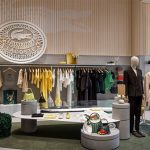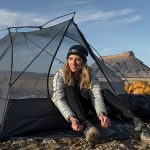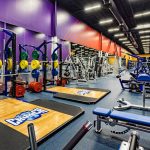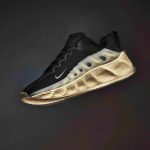As commodity and other input costs rise sharply, lead times grow and retailers order more conservatively, determining how much product to make is getting more difficult for outdoor brands. With that in mind, The B.O.S.S. Report decided to visit with Sierra Designs President Paul Gagner at the Outdoor Retailer Summer Market to get some insight into how vendors are coping.
“Our new motto has become Everything you need and nothing you dont,” said Gagner. “This reduces the environmental footprint and the time to market.”
One of the big challenges facing vendors these days is soft preseason orders. Gagner said many retailers are taking a “one to show and one to go” approach. In other words, retailers are buying neither deep nor wide. They are ordering one item to display and one to sell.
“The challenge the industry will face going into 2009 is everyone is being risk averse,” said Gagner. “If our industry continues to grow as it seems to be doing this year, some manufacturers will be left holding an empty bag. Retailers are less at risk than manufacturers because they can move to another brand if a product runs out.”
Cautionary retail orders have left vendors to take on more of the inventory risk going into an uncertain economy. To mitigate the risk, Sierra Designs has made an effort on the gear side to share more materials across tents, sleeping bags and packs. Sharing materials allows them to place fewer and larger orders for griege goods, which must be ordered 180 days before finished goods are due on retailer docks. That way, if preseason orders come in below forecast, Sierra Designs is not stuck with as many types of unused fabric, some of which may not carry over to the next season.
This tactic is more difficult to employ in the outerwear and apparel business, however, because garments use such a diverse array of fabrics. To reduce this risk, Sierra Designs has taken another tack. It is whittling down its vendor base so that it becomes more important to its suppliers. That means its suppliers are more inclined to be flexible when business conditions change. Since 2005, the company has cut back the number of vendors it works with to eight from 24, said Gagner.
“We tend to pick one vendor for knitting, one for woven goods, one for seam taping, etc.,” said Gagner. “We are picking one vendor in each specialty.”
With retailers becoming more risk averse, its also becoming more risky to introduce new product or support old product that does not sell well. So Sierra Designs is also focusing on what Gagner calls “SKU productivity,” which amounts to eliminating products, colors and other features that are not top sellers. “Its a term you are going to start hearing a lot about,” he said.
Sierra Designs is responding to the increased scrutiny on several fronts. First, it is closely evaluating the labor intensity of the production process used for each garment. If a product feature is particularly costly, but not essential, it is removed or replaced with a feature that does add value. Some observers say this is a much needed correction to the outdoor industrys tendency to over-engineer outerwear.
“A lot of features are not being used,” said Gagner. He cited welded forearm pockets using doubled sided Bemis tape as an example of a feature that adds cost but is rarely used, particularly on lower priced garments. In 90% of the cases, however, Sierra Designs is improving product to make it easier for the retailer and the consumer to swallow big price increases. Examples include:
Microlight: The retail price for this water resistant jacket rose to $39.95 this year from $29 in 2007. Still, pre-season bookings rose 30% because Sierra Designs switched to a more textured and better finished fabric and a more tapered fit reminiscent of more expensive jackets. In 2009, the Microlight will become available in a broader range of colors and bump up to $42.
Hurricane: This waterproof jacket rose from $59 in 2007 to $69.95 this year, but pre-season orders still rose 30% because Sierra Designs switched to a more breathable fabric (5,000 vs. 2,500 mm) to address complaints the 2007 jacket was clammy. The piece was renamed “Hurricane HP,” for “high performance,” the stuff pocket was moved from a side pocket to the hood, Sierra Design tabs were added on sleeve fasteners and a conversion chart was added to the inside of the jacket. Next year the jacket will get a Napoleon pocket and retail for $74.
Meteor Light: Rather than launch a new line of tents to showcase patent-pending pole geometry, Sierra Designs opted to redesign this venerable tent for 2009. The new design reduces the pole count to 2 from 3 and shaves a pound off the weight. Meanwhile, the tent boasts steeper walls and remains just as easy to set up as its predecessors. Retail pricing for the tent will rise $10 to $269.













